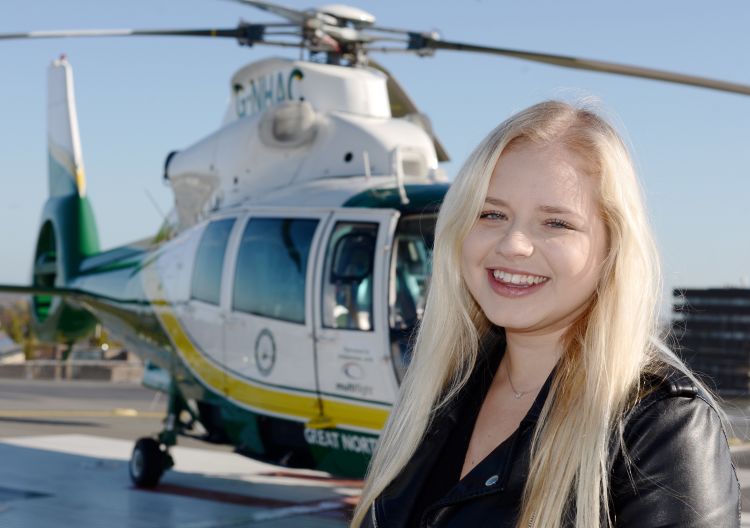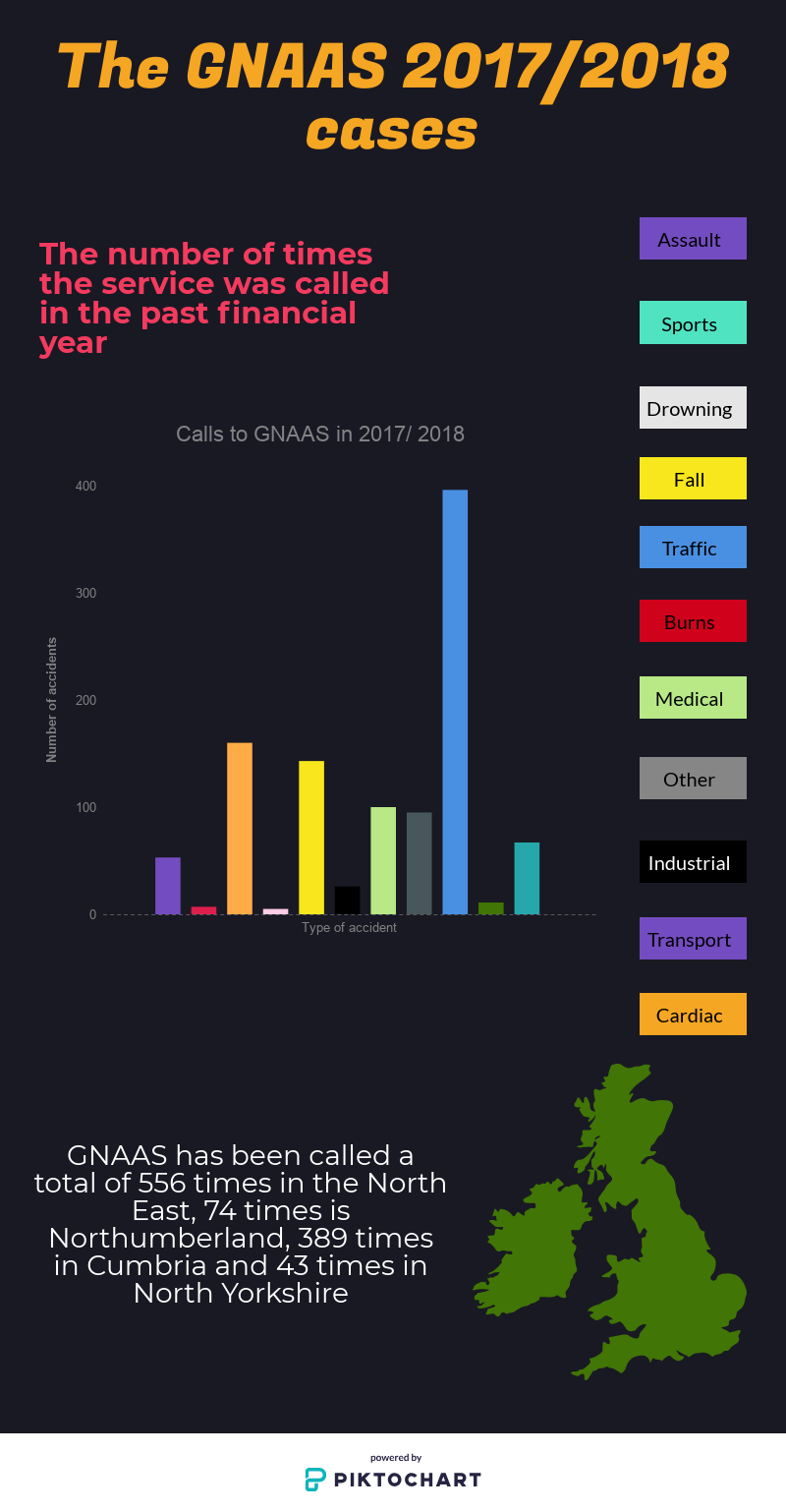The Great North Air Ambulance
An in-depth look into the work of the northern angels of rescue

Rushing paramedics, loud helicopter noises and an antiseptic smell all around; this is the usual scene at the Great North Air Ambulance (GNAAS) air base whenever they receive an emergency call for help.
The charity based air ambulance works 365 days a year, with a team of paramedics, doctors, pilots and operations managers, responding to emergency traumas across the North East of England.
Once a phone call comes in to the office, Jim Broad, the operation support manager for GNAAS, quickly assesses the case and flags it up to the on call team who would then carry their medical kit and immediately hop on to the helicopter.

Jim Broad, Operation support manager at GNAAS
Jim Broad, Operation support manager at GNAAS
On the ground office, Jim remains in contact with the team through a radio phone while keeping an eye on the monitors for any incoming traumas.
He said: "I worked in the ambulance service for 30 years before starting at GNAAS. I have been here for nine years now.
"I monitor these screens for any incoming emergency that a ground based ambulance would not be able to get to as fast as we could.
"We can also listen to 999 calls to see if any of the cases need our immediate help.
"We try to assess the cases so that we go to the most traumatic ones, like children and young people, for example, if a 20 something year-old is having a cardiac arrest."
Jamie Walsh, a GNAAS paramedic, took us on a tour to explore the insides of the flying ambulance.
Jamie, who has been working at GNAAS for the past four years, said that it is a privilege to him to be able to help the most critically injured people in the North East.
He said: “I’m a motorbike rider myself and I do lots of dangerous hobbies where you can hurt yourself, so when we go to someone who have been hurt in a motorcycle accident for example, I can relate to them.
“Seeing them come back and they’re back on their motorbike is a really nice thing. It’s very humbling.”
Former patients of the service often go to visit the base to meet the team that had previously saved their lives. Among those patients is 18-year-old Lauren Boylen, who was only 14 at the time she suffered from a traumatic accident.

Lauren Boylen, former patient of GNAAS - Credits: GNAAS
Lauren Boylen, former patient of GNAAS - Credits: GNAAS
Lauren was having a day out with her friends at Mowbray Park in Sunderland, when she accidentally fell off a cliff and fractured over 20 bones from the neck up. The air service was immediately notified and came to her rescue.
She said: "I don't think many people in the North East actually realise how amazing this charity is.
"The team are all amazing people, doing a great job and you don't actually realise how special they are until you need their help.
Grahame Pickering MBE, chief executive of GNAAS, said: “Thanks to the work of our staff and the generosity of our supporters, we were able to respond to 1062 call outs in the last financial year and provide pre-hospital care to the people of our region. But we can only continue to do this if the public keep supporting us.
“We are solely dependant on charitable donations to survive and last year we needed to raise £5.1m to keep our helicopters flying.”
Below is an infographic, detailing the different types and numbers of cases that GNAAS has responded to in the past financial year.

If anyone would like to donate to help GNAAS they can visit www.gnaas.com or call 01325-487263 for further information.

